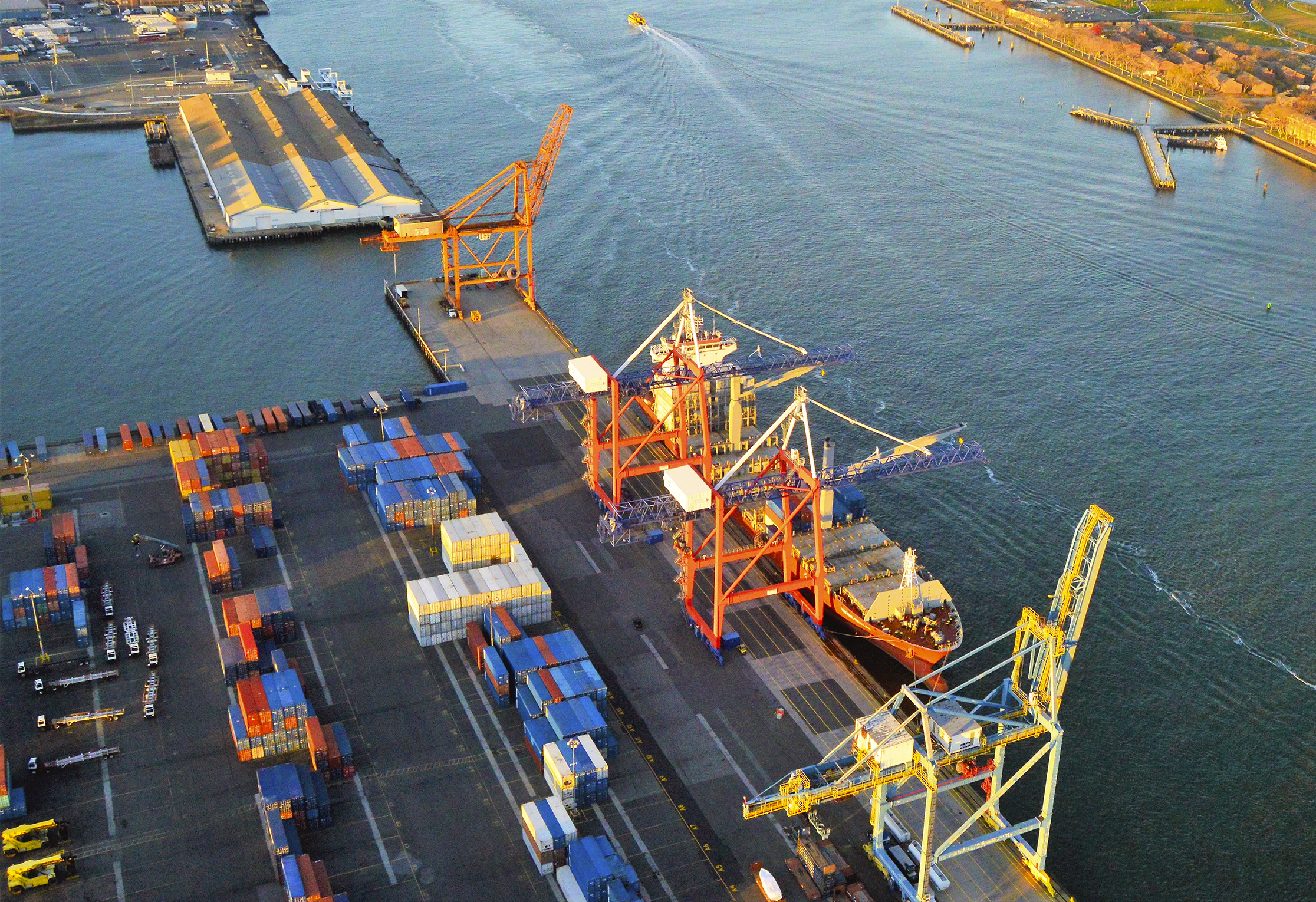
Combating Cargo Theft: Top Strategies for Transportation & Logistics Companies
By Alliant Specialty
Listen to the audio version:
Cargo theft is a significant concern in the transportation and Logistics industry, costing businesses millions of dollars in losses annually. According to CargoNet, 771 theft incidents took place in the second quarter of 2024 alone, amounting to a total loss value of over $34 million. This represented a 33% increase compared to the second quarter of 2023, and theft incidents are expected to rise as 2024 progresses.
Trucking fleets are persistent targets of theft because of the increasing value of transported goods, with food and beverage being the top targeted commodity type followed by household goods. The impact extends beyond financial loss, as it can lead to delayed deliveries, damaged reputation and increased insurance premiums. Cargo theft also poses public safety risks, especially when stolen goods include hazardous materials or pharmaceuticals that can be dangerous if mishandled or sold illegally.
As the risks associated with cargo transportation become increasingly complex, trucking fleets must implement robust strategies to safeguard their assets and ensure the continuity of their operations.
Understanding the Different Types of Cargo Theft
There are two primary types of cargo theft that companies face in today’s industry: straight cargo theft and strategic cargo theft.
Straight Cargo Theft
Straight cargo theft refers to the physical stealing of goods from a truck or cargo container. Criminals often target parked vehicles, unsecured warehouses or hijack moving trucks to steal valuable cargo. This type of theft is typically opportunistic and relies on the element of surprise.
Strategic Cargo Theft
Strategic cargo theft involves careful planning and coordination, typically relying on less straightforward methods of theft such as:
- Fictitious Pickups: This specialized form of cargo theft involves forging documents and using false identification (including stolen identities, fake emails and phone numbers) so criminals can pose as legitimate truck drivers. In a fictitious pickup, the cargo is given over unknowingly to criminals, who then sell the loads on the open market.
- Double Brokering: In a double brokering scam, a freight broker accepts a shipment from a shipper and then re-brokers that same load to another broker or carrier without the shipper’s knowledge.
- Identity Theft: Criminals may pose as employees to hijack shipments or secure loads.
- Cyber Threats: Criminals now employ sophisticated techniques to hack into transportation systems, track shipments and gain unauthorized access to cargo. For example, they might leverage phishing emails to gain access to sensitive data in a company’s system, including delivery information to facilitate fictitious pick-ups. Alternatively, they might use ransomware to encrypt a company’s data, making it inaccessible until a ransom is paid.
With strategic cargo theft, criminals exploit vulnerabilities in the transportation process, such as weak security measures or unmonitored routes, to execute their thefts seamlessly. Despite requiring more planning, strategic theft may be seen as more rewarding since criminals can reduce the likelihood of immediate detection with increasingly sophisticated technologies.
These wide range of increasingly complex threats can amount to significant financial losses, missed delivery deadlines and disrupted production schedules, inventory shortages and a decline in reputation. However, companies involved in the shipment of cargo can take action now to protect their organizations from theft.
Industry-Leading Strategies to Prevent Cargo Theft
Cargo theft can occur at any time and in various points in the supply chain, including warehouses, truck stops and in transit. With criminals constantly looking for opportunities to steal valuable cargo, it’s critical that companies take the following preventative measures to mitigate their risk:
- Lead Enhanced Security Training Sessions: Educating drivers and staff about cargo theft risks and prevention techniques is crucial. Regular training sessions should cover best practices for securing cargo, how to recognize suspicious activities and proper procedures during stops and rest breaks, such as remaining vigilant of one’s surroundings, locking any access points and checking in with the company to provide updates. Awareness on and off the road can significantly reduce the likelihood of theft.
- Leverage Advanced Technology: GPS tracking systems, electronic logging devices (ELDs) and other telematics allow fleet managers to monitor the location of trucks and trailers in real-time, ensuring that any unauthorized deviations from planned routes can be quickly addressed. Additionally, installing surveillance cameras and alarms on vehicles and at storage facilities can deter potential thieves and provide valuable evidence if a theft occurs.
- Optimize Driving Routes: Careful planning of routes can minimize the exposure to high-risk areas known for cargo theft. Avoid routes that pass through theft-prone regions, especially during nighttime or low-traffic hours, to reduce the chances of an incident. To further enhance security, implement dynamic route planning that adapts based on real-time telematic data about road conditions and theft hotspots.
- Use Secure Parking Practices: The majority of cargo thefts happen when trucks are parked in unsecured locations. Encouraging drivers to park only in well-lit, secure truck stops with surveillance and restricted access can significantly reduce the risk of theft. In addition, partnering with secure parking networks and using apps that identify safe parking locations can support drivers in making safer choices.
- Collaborate with Law Enforcement and Industry Partners: Building strong relationships with local law enforcement and joining industry associations focused on cargo security can earn you access to valuable resources and support. Law enforcement agencies often have task forces dedicated to cargo theft, and being part of these networks can improve response times and recovery rates in the event of a theft.
- Run Driver Background Checks: Conducting thorough background checks on drivers before hiring can help identify individuals with a history of theft or criminal activity. This ensures that the individuals you hire have a stable work history and can be trusted.
- Offer Incentives: To motivate drivers to adhere to security protocols, provide incentives for safe driving and theft prevention using telematic data. For instance, you may reward drivers who stay on their route, avoiding any unplanned or unaccounted stops or detours, and display safe driving behaviors . Incentives like bonuses, public recognition and time off can all be compelling motivators to build a culture around safety and security and decrease the likelihood of cargo theft.
Conduct regular risk assessments to identify vulnerabilities in your company and in the supply chain. With the knowledge gained from these assessments, you can proactively address exposures and implement the above mitigation strategies to protect your assets.
How Alliant Can Protect Your Company From Cargo Theft
Cargo theft is a complex issue that requires a multifaceted approach. By combining best practices like advanced technology, strategic planning, robust training and collaboration with law enforcement, trucking fleets can significantly reduce the risk of falling victim to cargo theft. Proactive measures not only protect valuable cargo, but also enhance the overall efficiency and reputation of the fleet, ensuring a secure and reliable service for clients.
While prevention is the primary goal, being prepared for the worst-case scenario is essential. Adequately insuring cargo can mitigate financial losses and ensure your business can quickly resume operations if and when theft occurs.
For more information, visit Alliant.com/Transportation
Alliant note and disclaimer: This document is designed to provide general information and guidance. Please note that prior to implementation your legal counsel should review all details or policy information. Alliant Insurance Services does not provide legal advice or legal opinions. If a legal opinion is needed, please seek the services of your own legal advisor or ask Alliant Insurance Services for a referral. This document is provided on an “as is” basis without any warranty of any kind. Alliant Insurance Services disclaims any liability for any loss or damage from reliance on this document.




